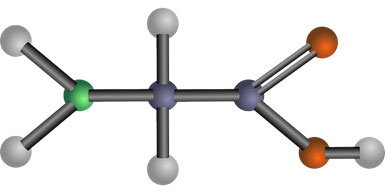
Dangers of Soy
Soy is a legume that is often used in dietary supplements as well as many foods including meal replacements. It’s a cheap protein source that has all the amino acids, and it’s often hidden in many foods.
There are several serious issues with soy that prevent it from being an effective food choice. Many of these problems might be surprising to see since soy is often claimed to be a health food.
GMO Soy
The USDA estimates that since 2015, 94% of all soy made in the US is GMO.
This means that the genes of soy have been artificially changed, which can potentially lead to adverse effects including immune system damage.
Since it’s unknown what kind of changes might happen when toying with genetics, it’s impossible to determine what other kinds of side effects may result.
Soy can have its DNA manipulated in many ways that critics say is potentially damaging to human health. This is why there’s been a great debate as to whether or not these kinds of crops should be allowed into the food supply.
Estrogen

There’s 2 compounds found in soy that can manipulate the hormone estrogen. This comes from:
- Phytoestrogens: Similar to estrogen, these plant found chemicals are found in high amounts within soy. Cornell University reports that Phytoestrogens may:
“potentially increase breast cancer risk”
This is why it’s often not advised to use soy for women who have a risk for this form of cancer.
It has also been warned about by Web MD, they add how it:
“might cause abnormal, tissue growth in the uterus”
The same website mentions how:
“very high levels of Phytoestrogens can be toxic”
Phytoestrogens have been criticized, and clinical studies often cite how much more information is needed to determine what kind of an impact they might have on human health.
- Isoflavones: Also known as vitamin P, it’s known to creates effects similar to estrogen. It’s also been linked to an increased breast cancer risk. It’s claimed to be beneficial for treating menopausal symptoms, but results have been mixed.
NIH, or the National Center for Complementary and Integrative Health, a US Department of Health and Human Services group adds:
“until more is known about soy’s effect on estrogen…(women) should be particularly careful”
Estrogen in men is believed by some to lower testosterone and sexual fertility.
Loss of Minerals
The plant based acid Phytates are known to bind themselves to important minerals. It’s considered an anti- nutrient, since it leeches precious nutrients the body needs.
Iowa State University has confirmed that Phytates found in soy are:
“the main inhibitors of nonheme iron absorption”
Many healthy foods such as almonds, spinach, and coconut have Phytates in some amounts. The difference is that cooking reduces its strength in these foods. Even cooked soy retains much of is mineral reducing Phytates.
The problem with this effect is that eating it may require further supplementation with other nutrients. This is to make up for the loss of minerals. There’s no clear indication of how much minerals are lost, and this effect varies from person to person.
Loss of Protein Digestion

Also found is soy is what’s known as trypsin inhibitors. Examine.com shows that this can:
“inhibit protein digestion in the stomach and small intestine”
Therefore, even though soy is a complete protein, it’s unknown how much protein is truly absorbed by the body.
The University of Tennessee also concluded that this chemical is:
“though to be the cause of pancreatic hypertrophy”
This means the pancreas is enlarged which is often the case in damaged and swollen tissue.
When taking something like a meal replacement or dietary supplement, reduced protein levels can prevent proper muscle growth and other important bodily functions.
Thyroid Health
Soy has a goitrogenic effect, which means that isoflavones found within it will disrupt the normal function of the thyroid.
A healthy thyroid is necessary since this gland regulates all the metabolic processes in the body.
The thyroid gland is used to properly promote energy, helps use protein correctly, control the body’s sensitivity to hormones, and it’s helpful for preventing weight gain.
Loma Linda University confirmed that soy could:
“adversely affect thyroid function”
The National Center for Toxicological Research also confirmed that soy:
“may cause harm… via either or both estrogenic and goitrogenic activities”
This combined effect that damages hormones can cause potentially damaging effects to overall health.
Benefits to Soy?
NIH, the National Center for Complementary and Integrative Health concluded that when it comes to soy there’s:
“not enough scientific evidence to determine whether soy supplements are effective for any other health uses”
They also add that side effects from soy can include:
- Rash.
- Breathing problems.
- Nausea.
- Bloating, stomach discomfort, and nausea.
Web MD has also confirmed that soy has oxalates. According to them there’s a concern since it:
“might increase the risk for kidney stones”
Other issues that are possible can include the following:
“might increase the change of getting bladder cancer”
“might increase the occurrence of precancerous changes in the tissue”
“Researches don’t know whether soy is safe for children”
These are all possible issues that occur from soy extracts and the food in as a whole.
Soy also has lower amounts of certain essential amino acids which whey protein has much more of. There’s less Leucine, Isoleucine, Valine, Lysine, and other amino acids which the body needs to function properly.
Conclusion
Most of all soy is GMO, it can manipulate hormones, reduce mineral and protein absorption, damage the thyroid, increase the risk for breast cancer, and it’s unknown what kind of a total impact is possible when using soy.
Not using this food can be hard since it’s added in many different forms such as soy protein, soy flour, and other varieties. However, since it’s a common allergen, it has to be listed in food labels as an added ingredient according to FDA standards.
With so many potential dangers it would be best to avoid this often genetically modified crop.